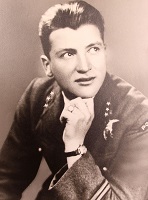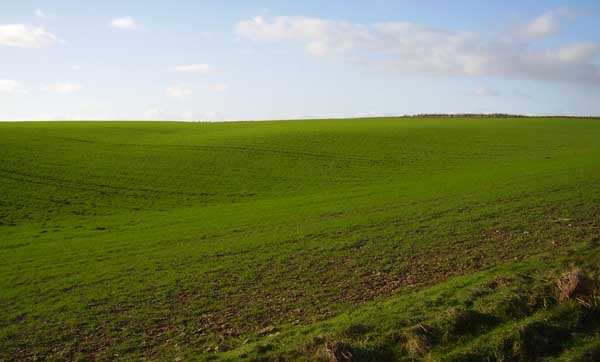On 21st December 1943 the pilot of this 577 Squadron aircraft had been cleared to fly a night-time Army co-operation flight in the Chester area. 577 Squadron were involved with such activities and had a number of locations across the country where sections of the Squadron were stationed; Wrexham, where this aircraft was based, had at least three Oxford aircraft for such flights by 577 Squadron. On this date the pilot left base at Wrexham with a wireless operator with him at 17.10hrs, it was the pilot's first such flight having only joined the unit days previously and prior to this he had always flown with another pilot. During the co-operation flight the aircraft flew into bad weather and the crew became lost, nothing more was heard from them until they were in the Topcliffe area of Yorkshire, by now some hundred miles off course. They had tried to gain permission to land at Topcliffe but this was refused as the airfield was blocked by a "major obstruction"; unknown to them a Lancaster had crashed on landing and had struck a Halifax killing three. The Oxford flew on and some time later it crashed in the Hawnby / Murton area on the western side of the North York Moors at around 22.15hrs. The aircraft caught fire on impact with the pilot being knocked unconscious by the impact which had also trapped his legs between his seat and the instrument panel. The wireless operator was stunned in the crash but he soon came round and was able to rescue the pilot and carry him away from the burning aircraft. The wireless operator then returned to the burning aircraft to remove both parachutes (whilst there is no full explanation for this, one assumes at the time of year and crashing on high ground the weather would have been very cold, if not snow covered, perhaps the parachutes would have helped them stay warm should the need arise). Soon after returning from the aircraft the wireless operator collapsed through shock. The aircraft was destroyed by the fire.
Both men would eventually be located and taken to Northallerton's Friarage Hospital where they would make recoveries, both were very lucky men. The pilot was released from hospital and returned to his Unit on 29th December 1943, the wireless operator was still being detained on this date.
The morning after the crash 577 Squadron sent F/O Busfield to "Skipton, Yorkshire" as an investigating officer into the accident, (probably referring to Skipton on Swale airfield, with Topcliffe being blamed this airfield was probably not used to house the investigating officer). An enquiry into this accident was held at Skipton on Swale on 5th January 1944 and the investigation blamed a number of factors for the crash; the bad weather was not forecast accurately, the pilot and the wireless operator were not cleared of blame though. The pilot, it was recommended, should have more night flying experience as he had only done eleven hours total night flying at the time of the crash. The wireless operator should have contacted base as soon as they became lost it was reported. The ORB for the unit gives some interesting information regarding the incident. It states the crew had sighted an aircraft beacon and carried out the correct procedure for obtaining assistance but had received no reply from the ground - whether this relates to RAF Topcliffe or not is not known. Brian Rapier's "Warplanes Return" book stated that an "unknown" aircraft crashed into a quarry in this same area, this could this be the same aircraft as there are some small shallow field quarries in the vicinity. A further reference to this aircraft was recounted to me some years ago and that it crashed after "flying into a box valley in bad weather", this could well be true as the area is technically covered in such valleys (I cannot remember where this information came from). There is a suggestion that the aircraft was almost out of fuel at the time of the crash.
Oxford P9041 was built to contract 777546/38 by Airspeed Ltd at Portsmouth and was delivered directly to 54 Operational Training Unit at Church Fenton on 22nd December 1940. It transferred to 15 S.F.T.S. at Kidlington on 24th February 1941 and moved onto 2 (P)A.F.U. at Brize Norton on 7th April 1942, remaining with them until around the unit disbanded on 13th July 1942. After a very short spell in storage the aircraft was issued to 1 G.T.S. at Croughton on 5th August 1942 where it remained until being transferred to the R.A.F.C. at Cranwell on 14th February 1943. It was placed in MU storage on 26th March 1943 and remained there until being issued to 6 A.A.C.U. at Castle Bromwich on 10th October 1943. On 1st December 1943 577 Squadron was formed at Castle Bromwich from flights from No.6, No.7 & No.8 A.A.C.U.'s. It was written off in the incident detailed above with Cat.E2/FA damage recorded and was struck off charge some days later on 31st January 1944 when the paperwork went through. The 577 Squadron ORB states that the engines from this aircraft were salvaged by 60 MU and forwarded to Rover Cars Ltd at Barnoldswick.
Pilot - Sgt Tadeusz Jerzy Marian Mioduchowski PAF (P/794371). Injured.
Wireless Operator - F/Sgt L Read (Reid/Reed?) RAF. Injured.

Tadeusz Mioduchowski was born on 27th October 1916. He arrived at 577 Squadron at Wrexham on 3rd December 1943, two days after the unit formed, along with two other Poles; Sgt's Pruski and Plucinski. The weather during early December 1943 is recorded in the unit ORB as being poor, with little flying training of the new pilots being done because of foggy conditions. Mioduchowski appears to have had his first night-flight with the unit on 13th December 1943 in a dual flying exercise. The weather was too bad to be able to fly a co-operation flight for the Army though. His next flights were on 19th and 20th December 1943 and involved a night flying co-operation flights with an instructor. A Sgt Mioduchowski was training to fly Wellingtons at 18 O.T.U. in April 1944 and may well be the same person. By late-June 1944 he was definitely serving at No.1 Lancaster Finishing School at Hemswell. On 25th June 1944 he was at the controls of Lancaster ED607 at 21.05hrs and had just landed successfully at Hemswell when the tail wheel unit collapsed. The aircraft came to rest slightly damaged. By early October 1944 he was serving with 1586 (P) Flt. On 7th October 1944 he was flying Halifax JN956 and on landing at Brindisi the aircraft swung off the runway in a crosswind causing the undercarriage to collapse. The next reference I have found to him is that Warrant Officer Mioduchowski was posted in to 301 Squadron, based at Brindisi from No.56 PTS on 28th February 1945. Post-war he remained in the UK and became a naturalised citizen in 1949. He died in Bristol on 31st May 1981 and is buried in Avonview Cemetery, Bristol.
A Wireless Operator / Air Gunner F/Sgt Leo Erle Read RAFVR (1218563) was killed on 31st March 1944 while serving with 622 Squadron when Lancaster ED619 was shot down by a night-fighter over Baumbach and who is now buried in Rheinberg War Cemetery. I had initially suggested that he may have possibly been the same wireless operator as involved in the incident to Oxford P9041 on the North York Moors but in November 2013 I was kindly contacted my his nephew Paul Fox to correct this assumption. He cannot have been with 577 Squadron in December 1943 as he was already serving with 622 Squadron, he first flew operationally on 26th November 1943 with 622 Squadron and then again on 20th/21st December 1943 so cannot have been with flying 577 Squadron the next afternoon. I thank Mr Fox for kindly correcting me. Despite going back through my records I cannot recall how I found out the initial "L" of Sgt Read.

The photograph shown above is of the location quoted in a once public Yorkshire Air Museum list of flying accidents. My photograph was taken in May 2002. Historians Ken Reast and Eric Barton had searched this area with metal detectors with permission from the land owner and found nothing. Referring to a police report though this suggests the site is infact some 500 yards away from the YAM location and as the aircraft burnt out I would suggest that something should remain at the site. This YAM location is therefore possibly incorrect. The photograph below is looking toward the east and some old quarry workings. Information is still being found that mentions this incident, in 2023 I came across some information with a different map reference that puts the site as being much nearer High Paradise Farm though I have yet to explore this information fully.
